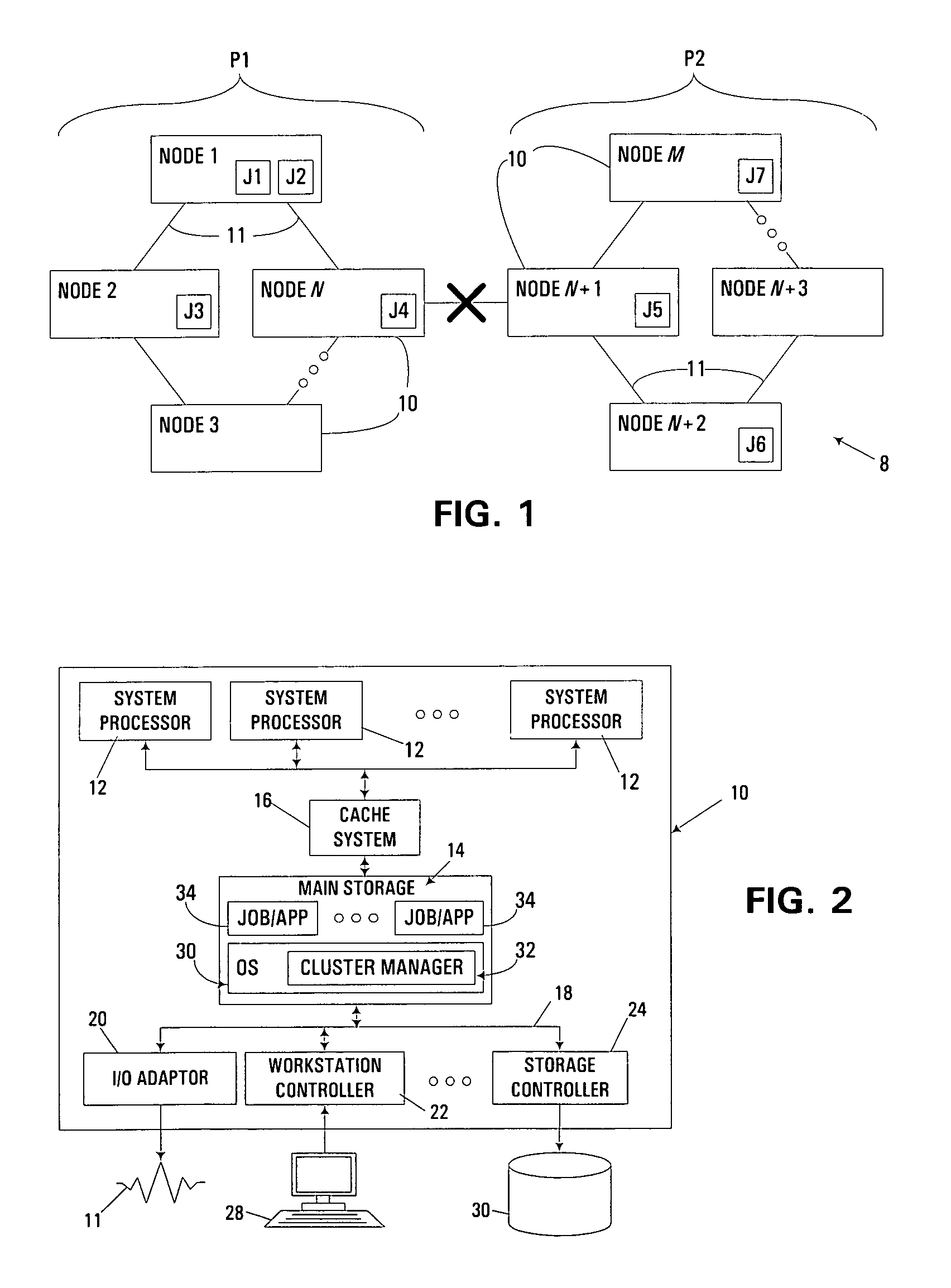Merge protocol for clustered computer system
- Summary
- Abstract
- Description
- Claims
- Application Information
AI Technical Summary
Benefits of technology
Problems solved by technology
Method used
Image
Examples
Embodiment Construction
[0019]The embodiments described hereinafter utilize ordered messages to process merge requests in a clustered computer environment, e.g., to merge multiple partitions of a cluster group logically resident in one or more nodes of a clustered computer system. As shown in FIG. 1, for example, a clustered computer system 8 may include a plurality of nodes 10 interconnected with one another via a network of interconnections 11. Any number of network topologies commonly utilized in clustered computer systems may be used consistent with the invention. Moreover, individual nodes 10 may be physically located in close proximity with other nodes, or may be geographically separated from other nodes, e.g., over a wide area network (WAN), as is well known in the art.
[0020]In the context of a clustered computer system, at least some computer tasks are performed cooperatively by multiple nodes executing cooperative computer processes (referred to herein as “jobs”) that are capable of communicating ...
PUM
 Login to View More
Login to View More Abstract
Description
Claims
Application Information
 Login to View More
Login to View More - R&D
- Intellectual Property
- Life Sciences
- Materials
- Tech Scout
- Unparalleled Data Quality
- Higher Quality Content
- 60% Fewer Hallucinations
Browse by: Latest US Patents, China's latest patents, Technical Efficacy Thesaurus, Application Domain, Technology Topic, Popular Technical Reports.
© 2025 PatSnap. All rights reserved.Legal|Privacy policy|Modern Slavery Act Transparency Statement|Sitemap|About US| Contact US: help@patsnap.com



